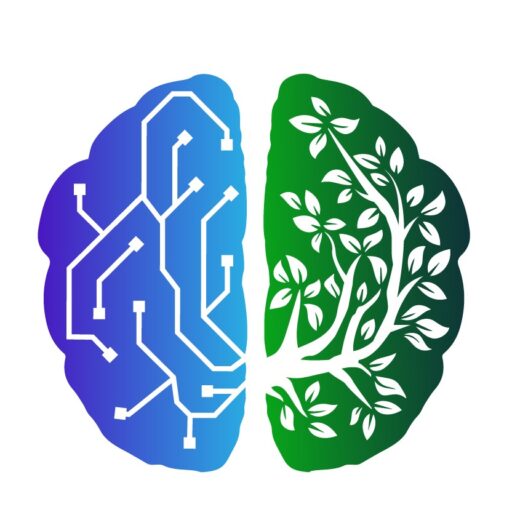What is Transcranial Magnetic Stimulation (TMS) and what Electroconvulsive Therapy (ECT)? What is the difference between the two?
Transcranial Magnetic Stimulation sounds terrifying. Electroconvulsive therapy sounds even more frightening.
Both TMS and ECT are alternative solutions for when antidepressants fail to improve symptoms of depression. While the procedures of TMS and ECT are quite different, both are brain stimulation therapy.
What are the pros and cons of TMS vs. ECT? How does each of them work?
What is TMS?
Transcranial Magnetic Stimulation (TMS) refers to the procedure of placing a magnetic coil close to someone’s cranium and sending magnetic pulses to stimulate specific nerve cells typically associated with depression.
TMS is non-invasive, and patients remain awake the entire session. Patients are encouraged to read and relax during the procedure. Patients are safe to drive home after treatment is finished.
TMS takes place over an extended period of time, with sessions happening five times a week for about six weeks.
TMS entails an extended time frame because you are essentially rewiring neurons in your brain. Nerve connections do not develop overnight. Developing healthy connections takes time as well. It’s like going to the gym, for your brain!
What is ECT?
Electric Convulsive Therapy (ECT) involves applying electric currents directly to a person’s brain to induce a mini-seizure.
You might be familiar with ECT from what you have seen in the movies. The depiction of ECT in film has created a tremendous stigma against ECT.
Today, ECT is safer and more comfortable for patients than it has been in the past.
ECT is an invasive procedure. With ECT, patients are placed under general anesthesia while patients experience light seizures. While ECT is much safer than it once was, patients still need to be monitored during and after the procedure.
People considering ECT should be aware that they will need a driver to and from their sessions and they will need to take off extended time from their place of work.
The Equipment
ECT requires a surgical suite to administer the procedure and a stay in a recovery room once therapy is finished.
The ECT machine itself looks like a dated receiver with a few cords that lead out to two handheld grips with circular leads. They are placed on the patients’ temples for 60-second, sending an electrical current, causing your body to seize temporarily.
A monitor is utilized to track heart rate, oxygen levels, and other vitals.
Notable details to carry out ECT:
- Recovery time/ possible overnight stay
- Sedation
- An IV
- May require oxygen treatment
- Mouthguard (prevent your teeth from cracking)
TMS is a simple, same-day procedure that requires zero recovery. TMS treatments are carried out on our Brainsway device, outpatient in our clinic.
The magnetic stimulator is contained within the Brainsway helmet that is soft and padded. It is placed on the area of the brain the therapist has deemed needing stimulation. Stimulation is different for every patient based on their needs.
What Are the Side Effects of TMS vs. ECT?
One of the pros of TMS is that TMS generally has very few side effects.
The potential side effects include discomfort during treatment (tapping sensation) and a headache towards the beginning of your treatment. With time, the headaches will completely disappear. Altogether, TMS is a very safe procedure and poses very few risks.
ECT, while very effective carries its own risks.
ECT can lead to feelings of confusion and memory loss after the procedure. The experience of seizures may cause you to have headaches, jaw aches, and soreness in muscles.
Electroconvulsive therapy can also lead to complications from general anesthesia or heart conditions.
Which Type of Brain Stimulation Therapy is Better?
The answer depends on your preference and health condition. We can review the pros and cons to help you determine which type of treatment is best for you.
The benefits of TMS therapy are that TMS yields very few side effects. TMS is an FDA-cleared treatment for depression, and it serves as an alternative to medication. It is good news for people who have not had great experiences with antidepressants.
TMS does feature a handful of cons, however. The treatment course is quite extensive and requires commitment to daily treatment in order to be effective.
What about ECT? What are the benefits of ECT?
ECT is also a great alternative for people with treatment-resistant depression. ECT can treat extreme forms of depression and has a more significant effect when compared to TMS.
What are some of the drawbacks of ECT?
ECT yields many side effects, including achiness, memory loss, and confusion. Complications are a great risk for people with heart conditions or who respond poorly to general anesthesia.
CNS Mental Wellness
If you are interested in TMS in Frederick, MD, CNS Mental Wellness could be the right choice for you.
Most insurance companies cover TMS treatments as an alternative to treatment-resistant depression including Medicare & Maryland Medicaid. Your insurance company may require prior authorization before you try TMS.
CNS Mental Wellness will walk you through what to expect with TMS treatment in addition to the information presented here. Transcranial Magnetic Stimulation (TMS) is an exciting innovation for treating people with treatment-resistant depressive disorder.
Seek Mental Wellness Today
When it comes to mental health treatment, it is worth it to explore your options. If you have any questions or would like to find out more about Spravato, contact CNS Mental Wellness today by calling at (240) 439-4110 or by using our appointment request form online now. We look forward to serving you!


